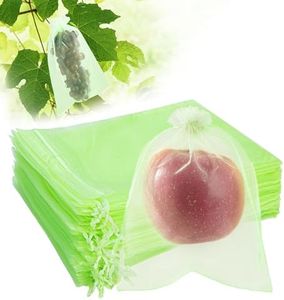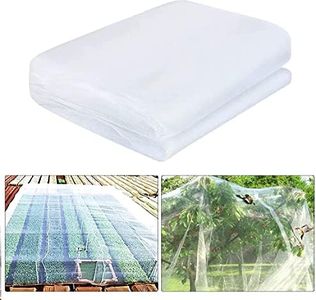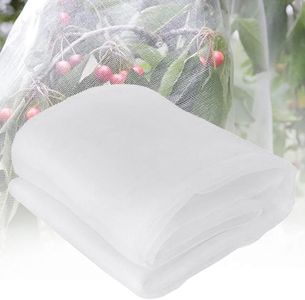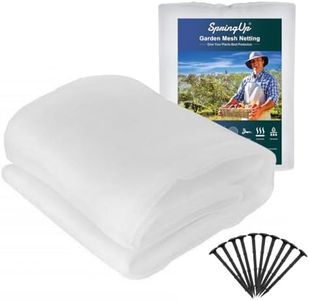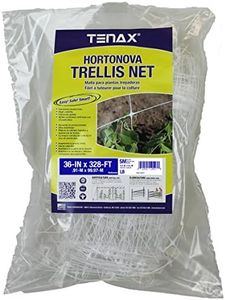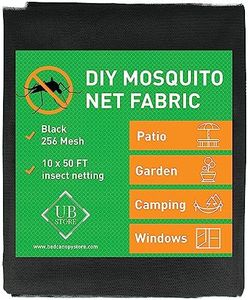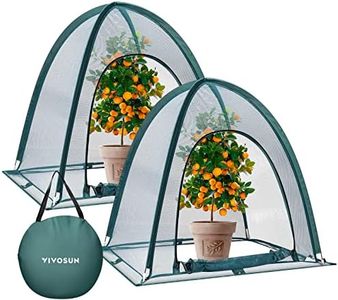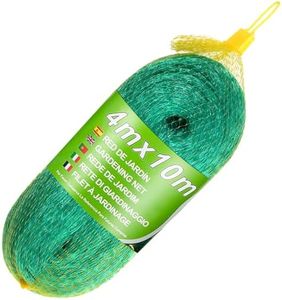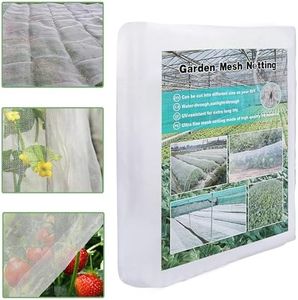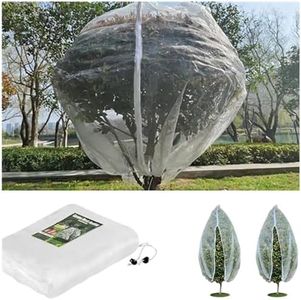We Use CookiesWe use cookies to enhance the security, performance,
functionality and for analytical and promotional activities. By continuing to browse this site you
are agreeing to our privacy policy
10 Best Garden Nettings
From leading brands and best sellers available on the web.Buying Guide for the Best Garden Nettings
Choosing the right garden netting can make a big difference in how well you protect your plants, fruits, or vegetables from animals, birds, and even harsh weather. The best way to start is by thinking about what you need the netting for—for example, keeping birds away from berries, protecting young seedlings from harsh sun or pests, or keeping out larger animals like rabbits or deer. By considering your main goal and the specific needs of your garden space, you can narrow down which netting will work best for you.MaterialMaterial refers to what the netting is made of, such as plastic, nylon, or metal wire. This is important because different materials have different strengths, lifespans, and levels of resistance to weather. Plastic is lightweight and affordable but can degrade in sunlight over time, while nylon is more durable and flexible. Metal netting is very strong and ideal for protecting against larger animals but is heavier and can rust if not coated. If you want something for a season or two, lightweight plastic might be enough, but for long-term use, consider stronger nylon or coated metal, especially if you need to keep out persistent animals.
Mesh SizeMesh size is the size of the openings in the netting. This matters because it determines what can get through. Smaller mesh is needed to keep out tiny insects, while bigger holes are fine for just keeping out birds or larger animals. Mesh size usually ranges from very fine (a few millimeters) to large (a few centimeters). For protecting fruits from birds, a medium mesh works well. For insect control, go for the smallest mesh. Think about what you’re trying to block—the smaller the threat, the smaller the mesh you’ll need.
UV ResistanceUV resistance means the netting can withstand exposure to sunlight without breaking down quickly. This is important because sun can make untreated nets weak or brittle over time. Some nets are labeled as UV-resistant, meaning they will last longer outdoors without degrading. If you plan to leave the netting in place all season or even year-round, UV resistance is very useful. If you only use it temporarily, this might be less of a concern.
Size and Coverage AreaSize and coverage area tell you how much space the netting can cover at once. This helps you figure out how many pieces you need or if one large net will do the job. Common sizes include netting that’s a few meters wide and long, but you can also find it in rolls for custom sizing. Measure your garden beds or trees before shopping to make sure you buy enough netting, and consider if you want some extra to overlap or secure the edges.
Ease of InstallationEase of installation is about how simple it is to put the netting up and take it down. Some nettings are lightweight and drape easily, while others need frames or stakes to be held up. Consider how often you’ll need to access your plants for watering, harvesting, or pruning. If you’ll be moving the netting often, choose one that is flexible and easy to handle. If it’s more permanent, heavier-duty options may work even if they take longer to set up.
